Got to love a good photo opportunity gone wrong.
Given the Tory refusal to rule out tax rises, and their seeming abandonment of the pension triple lock, is any family safe in their hands?
If March was all about the daffodils, then April is all about the tulips from the modest survivor saxatilis to some of the more showy ones planted just last October.
Even deep in the dark under the wisteria pergola, the tulip planted last Autumn have come through and are looking beautiful.
Up at the top they hide the daffodil leaves as they go over and fill a gap waiting for the roses to come into flower. Next year maybe I should add some “blacks” to the mix. Maybe not.
Unfortunately I can’t remember what varieties I bought and dug into the soil so will have to look them up on my account. Always assuming I can remember who I bought them with. One day I will organise my gardening, but probably not this year.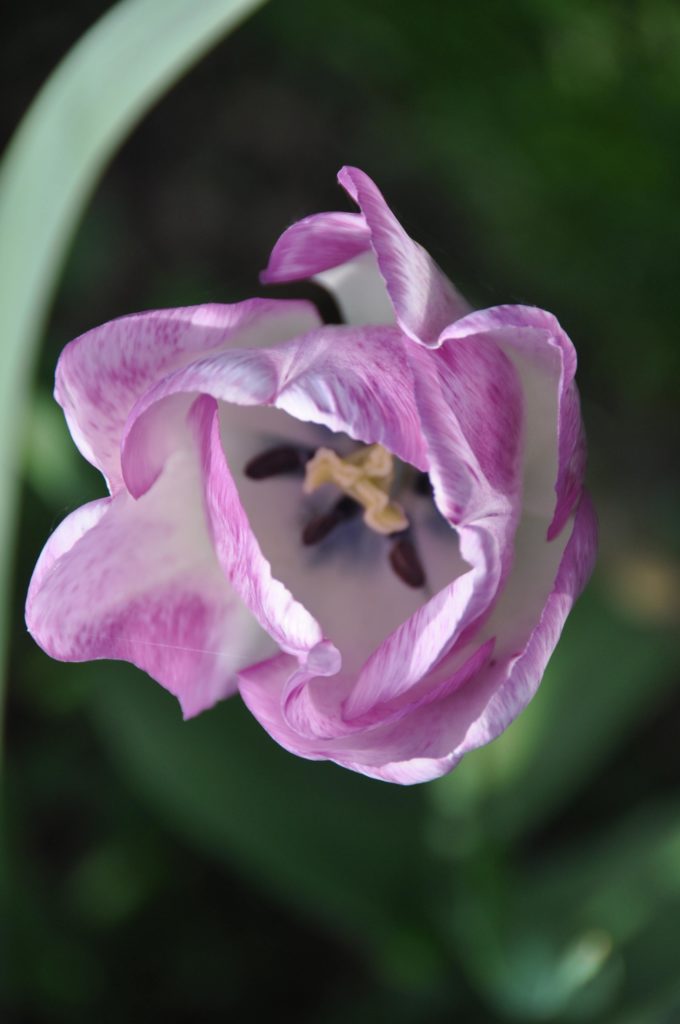
There’s always a few “Shirleys” in there and some “Queen of the Night” but thanks to the mildest of Winters, tulips bought to be staggered and arrive in sequence have all arrived together.
I seem to have bought some fancy shapes in as well, some lily tulips and doubles that look more like roses than anything else.
As for the yellow striped number, I’m pretty sure that’s courtesy of the squirrels digging and replanting. Would I have bought a striped tulip deliberately?
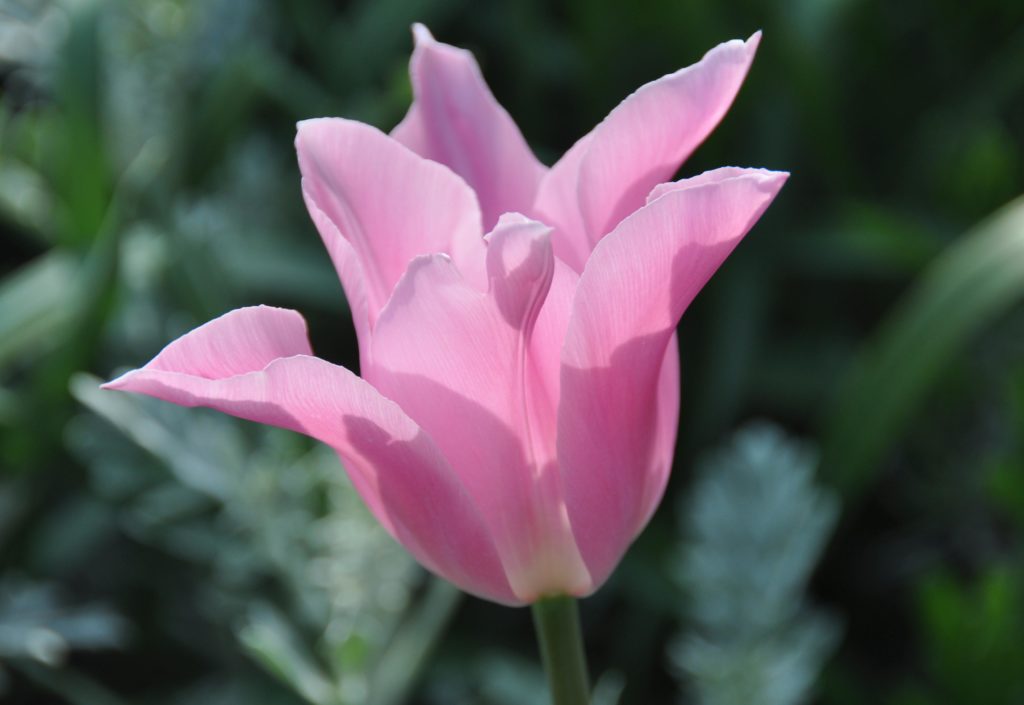
Yet again I prove a total inability to produce elegance and must settle for pretty – not a bad place to settle.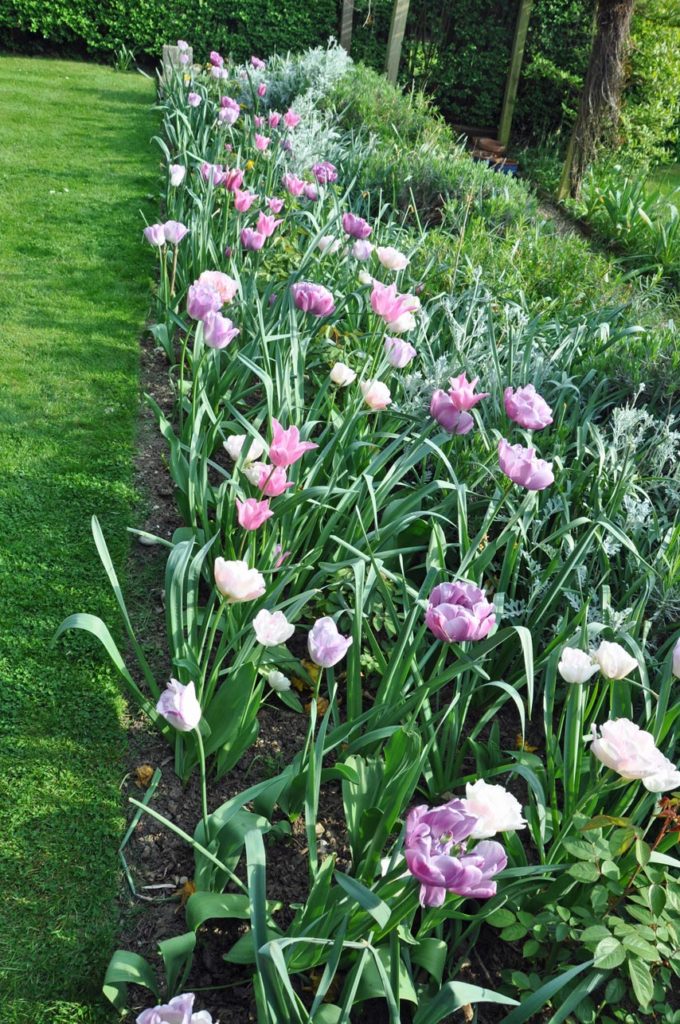
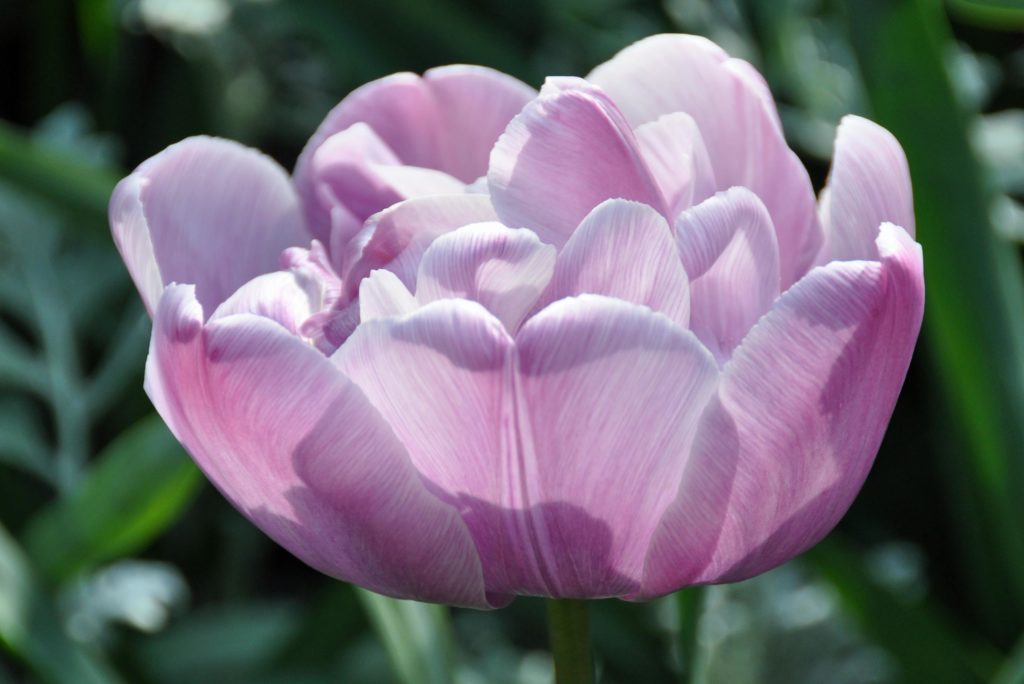
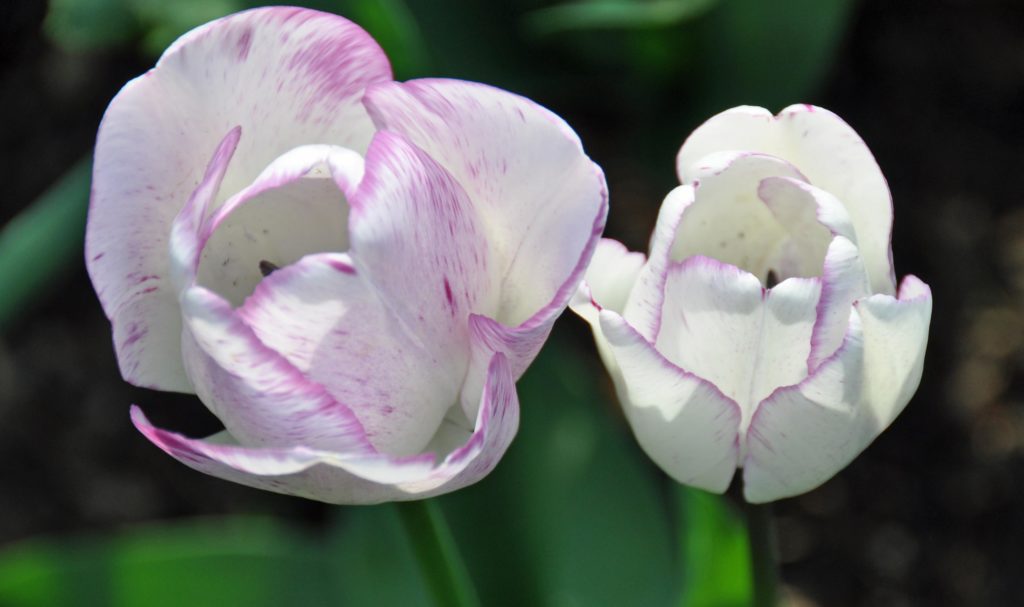
The perennial wallflower erysimum bowles, having flowered even through the Winter is now come into it’s own and is brightening up the borders.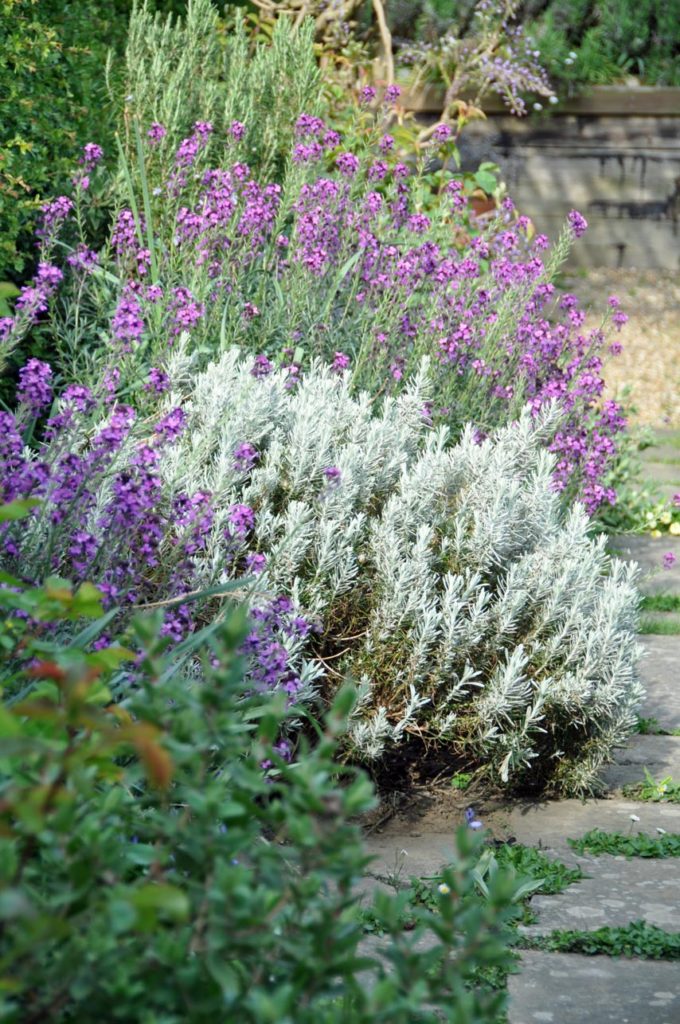
The blossom on the pear has gone over but suddenly the red leaves of the maple open up. They will add colour all through the year to one final burst in Autumn. Sometimes it seems too easy to forget foliage as a useful colour to the garden.
In the shade at the back, the dry has been almost too much for some of the plants, The large ferns are at their most bedraggled and only the euphorbia is really happy.
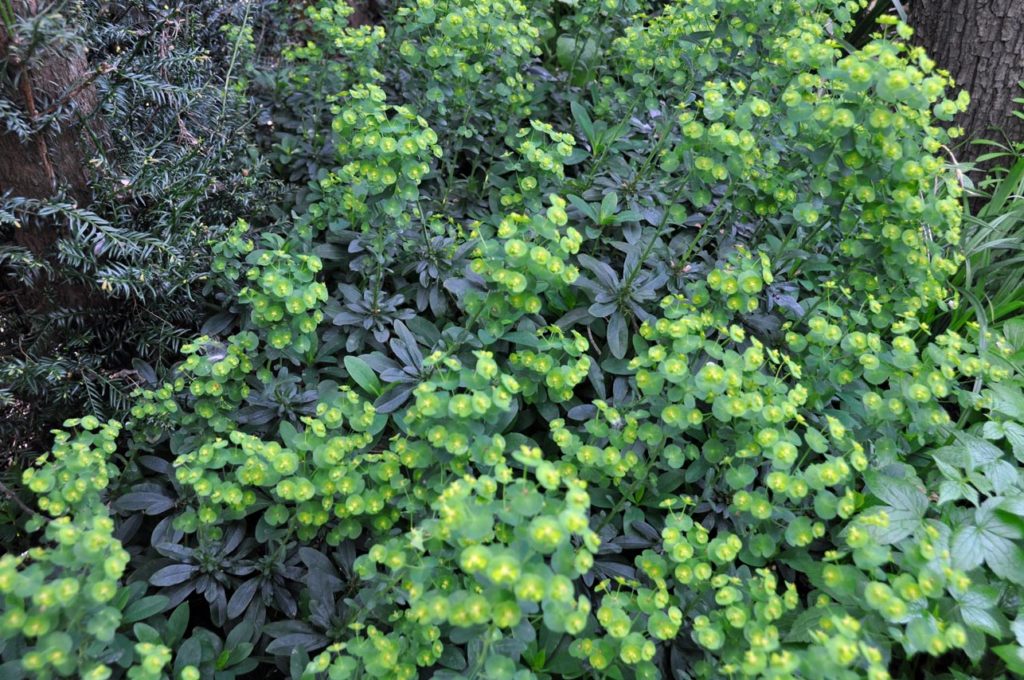
Still the wild garlic is at least up and about and useful for recipes. I have no idea what a chimichurra is but I’m all for having a go. 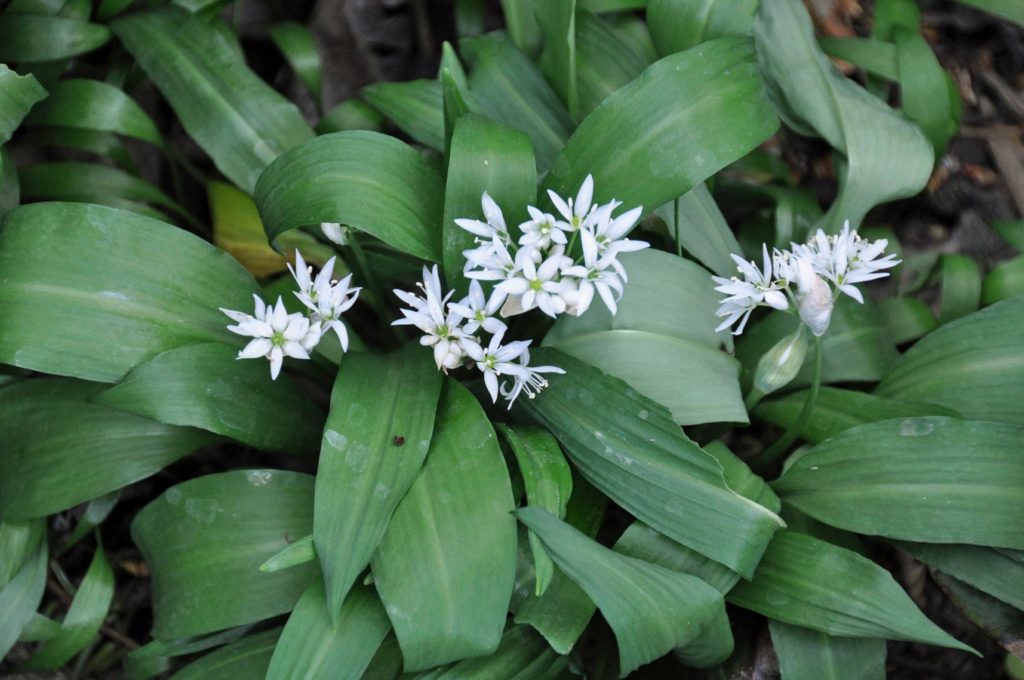
In the forgotten bits, the campion and forget me nots are finally flowering away.
Up on the gravel roof, almost every day something new pops up it’s head. It’s shocking really how the combination of dry with sun is so very much easier to deal with than dry shade.
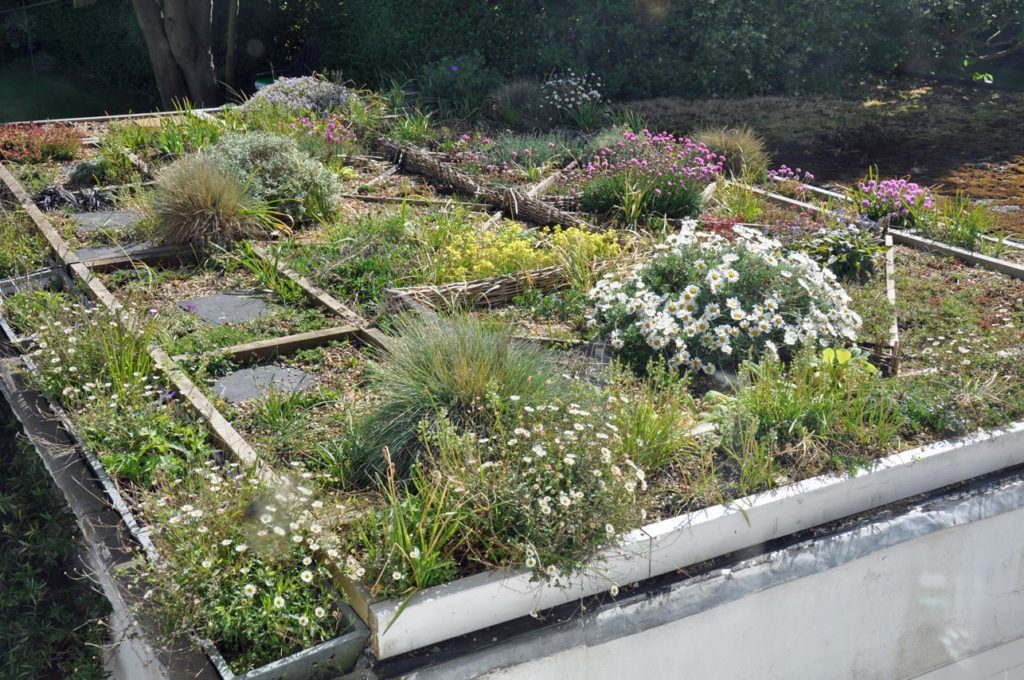
The phlox is in it’s element with flowers everywhere in a glorious mound of lilac
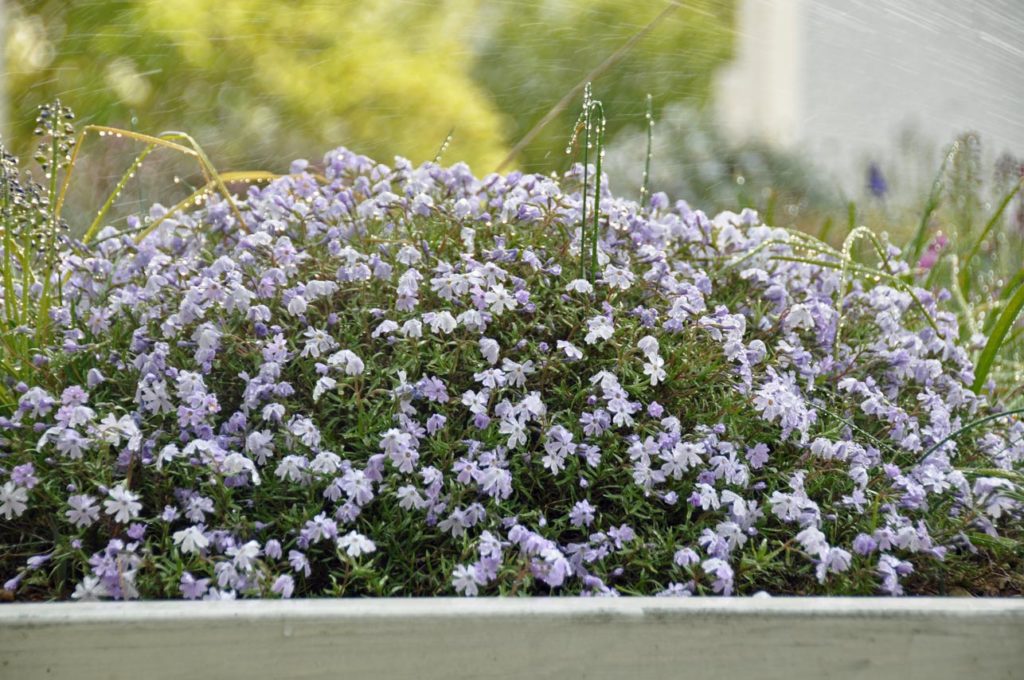
And with the occasional shower (though much fewer than a normal April) the auricula is out and flowering.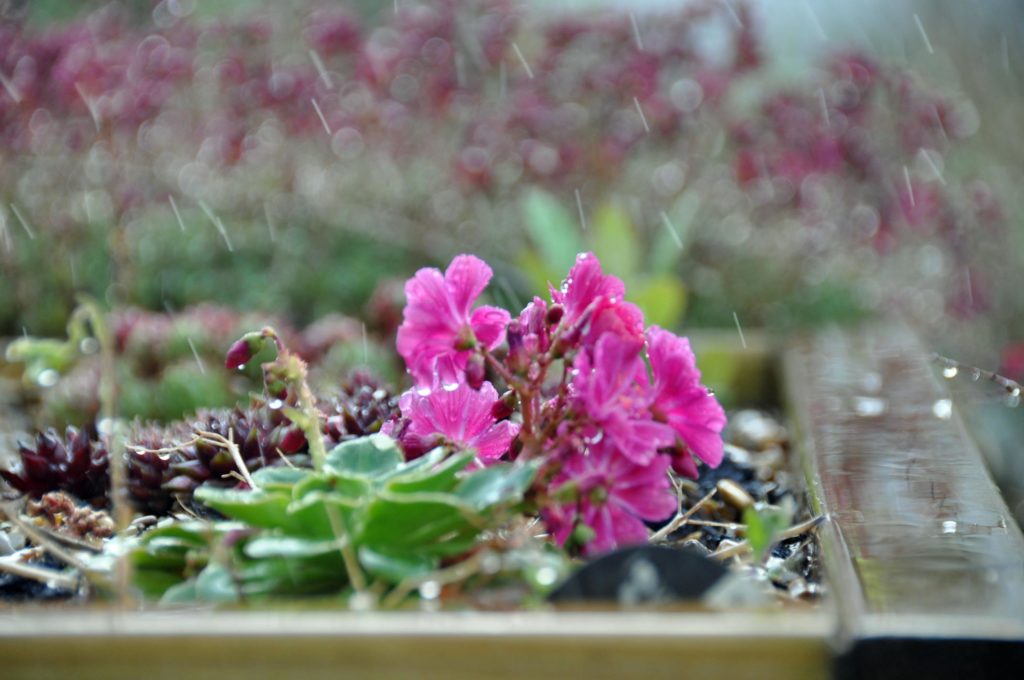
The dodecatheon have poked through though not in good numbers – too dry a Winter probably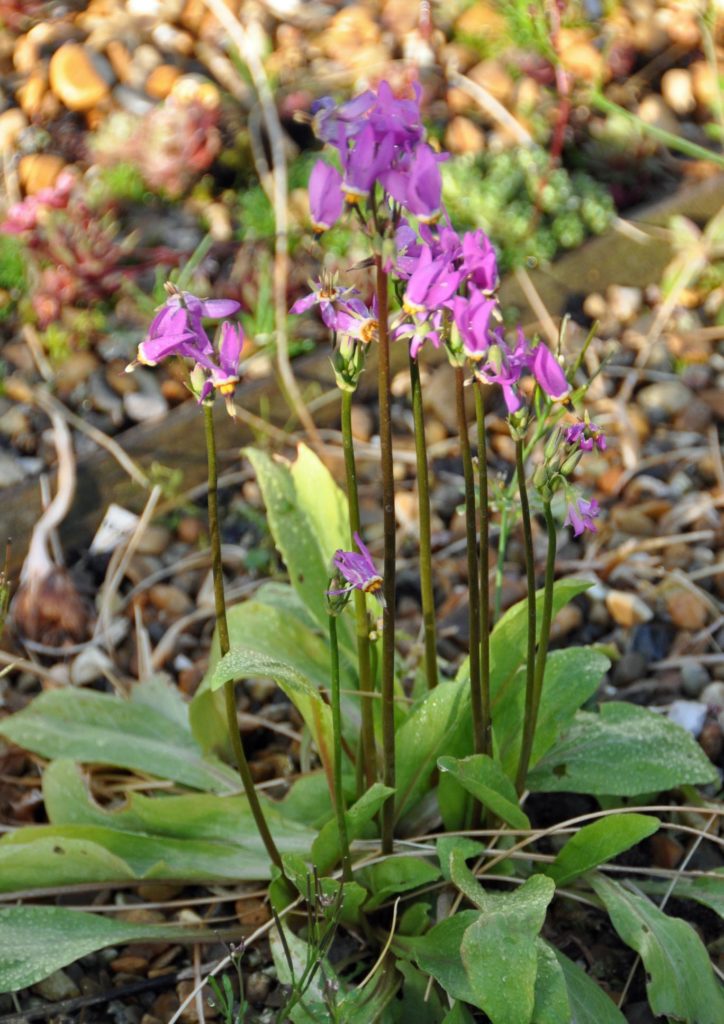
And the rhodenthemum is bristling with daisy flowers
The alpine erysimum is in full flower too though it won’t last as long as the one below in the borders.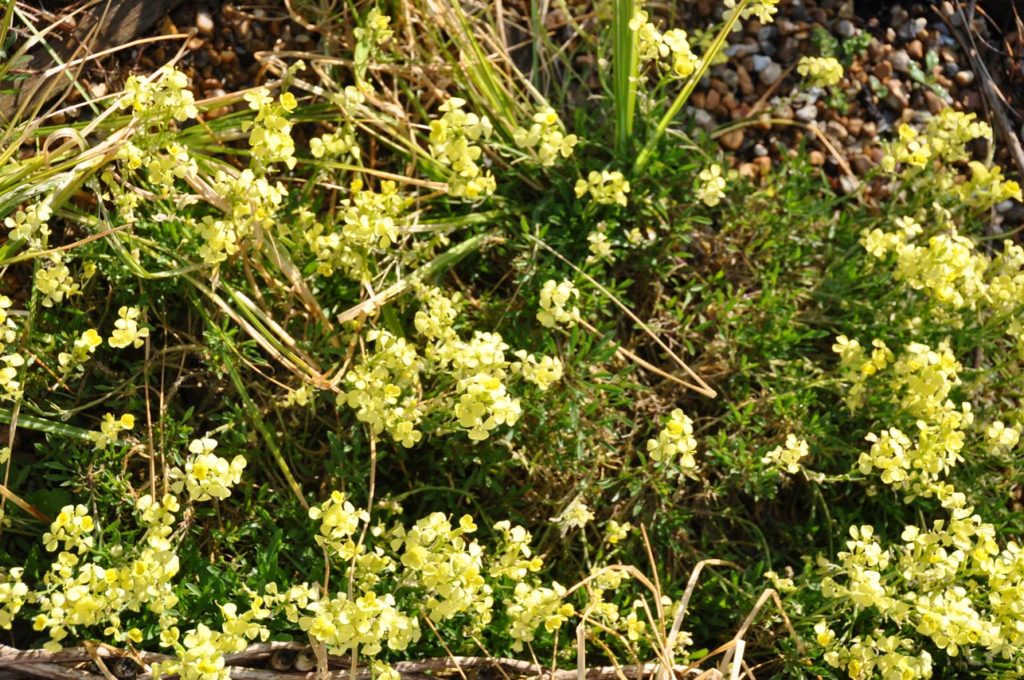
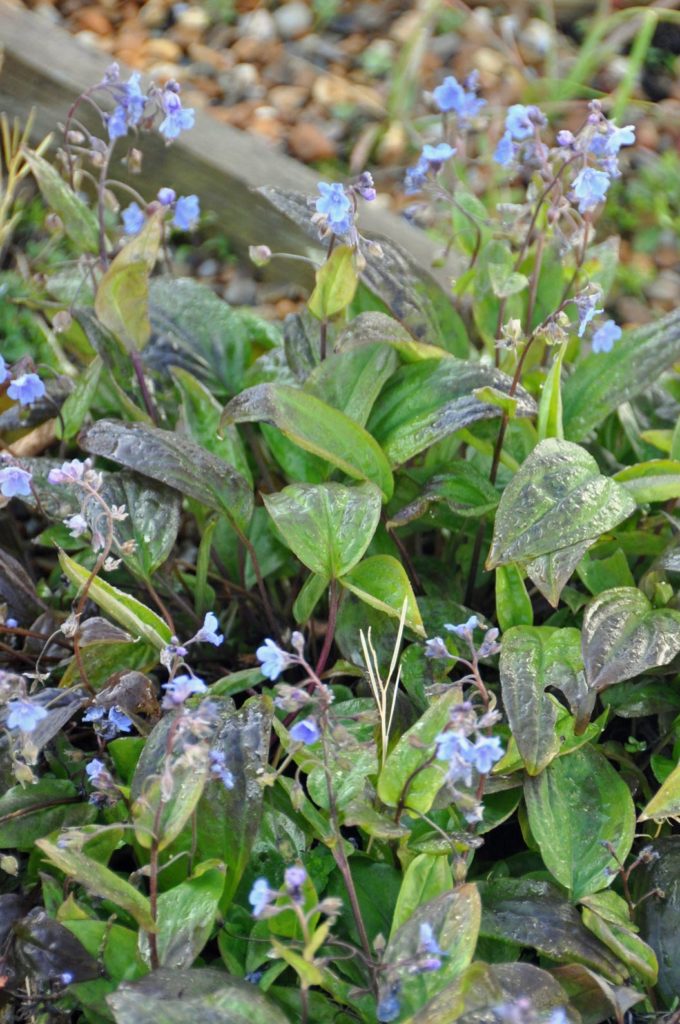
The sedum will grow forever though, turning redder than red in the Autumn along with the maple leaves.
Towards the end of the month, the bluebells (apparently inferior Spanish ones but beautiful nonetheless) have finally popped up their heads.
It means the slugs and snails cannot be far behind so the nemaslug has to go down even if a cold snap might make it pointless.
And although the blossom of my pear tree has gone over all too quickly, my neighbour’s decision to allow one trunk of the hawthorn hedge to grow into a tree is paying dividends.
There are small pleasures in all the corners of the April garden.
From the raindrops on alchemilla to the dancing blue bells.
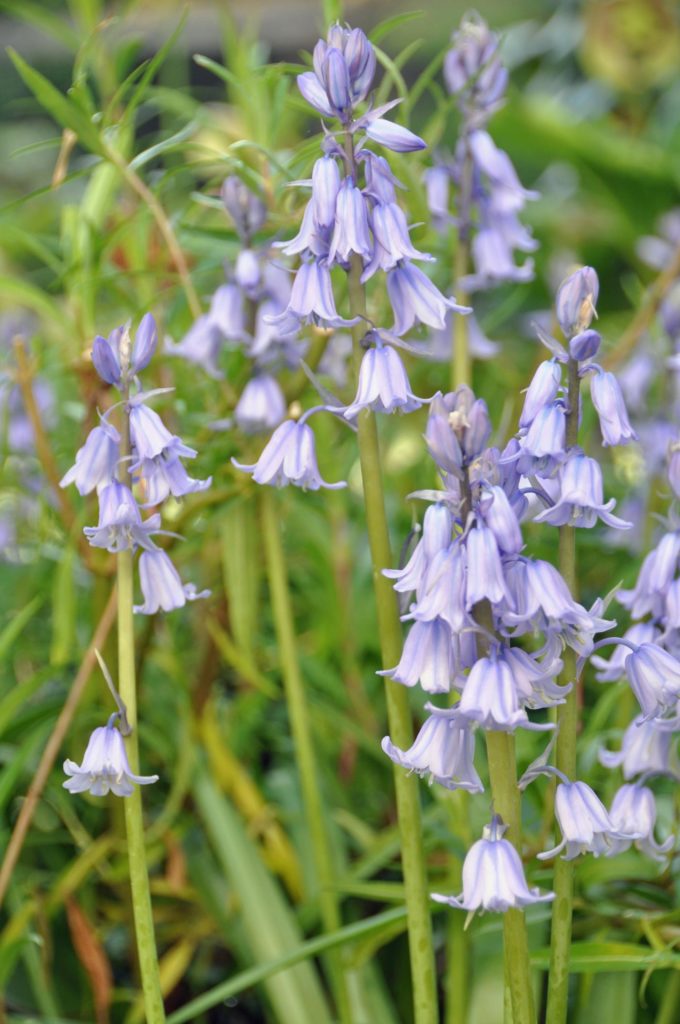
And where there are surprising bare patches, it turns out less surprising when you find the favourite hideaways for the beasties of the household.
Down in the bed closest to the house, the solomon’s seal is sprouting up not yet eaten away by slugs nor grubs.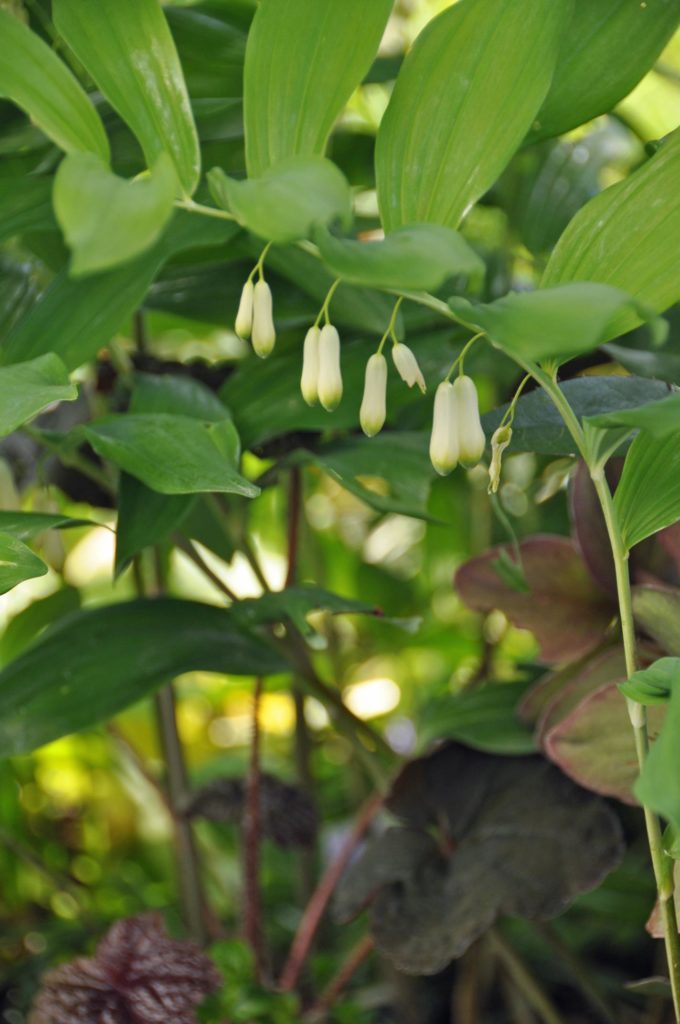
And at the midpoint of the garden, the wisteria is just about flowering after a very hard pruning at the end of last year.
A bit barer than usual but so incredibly beautiful it makes me happy.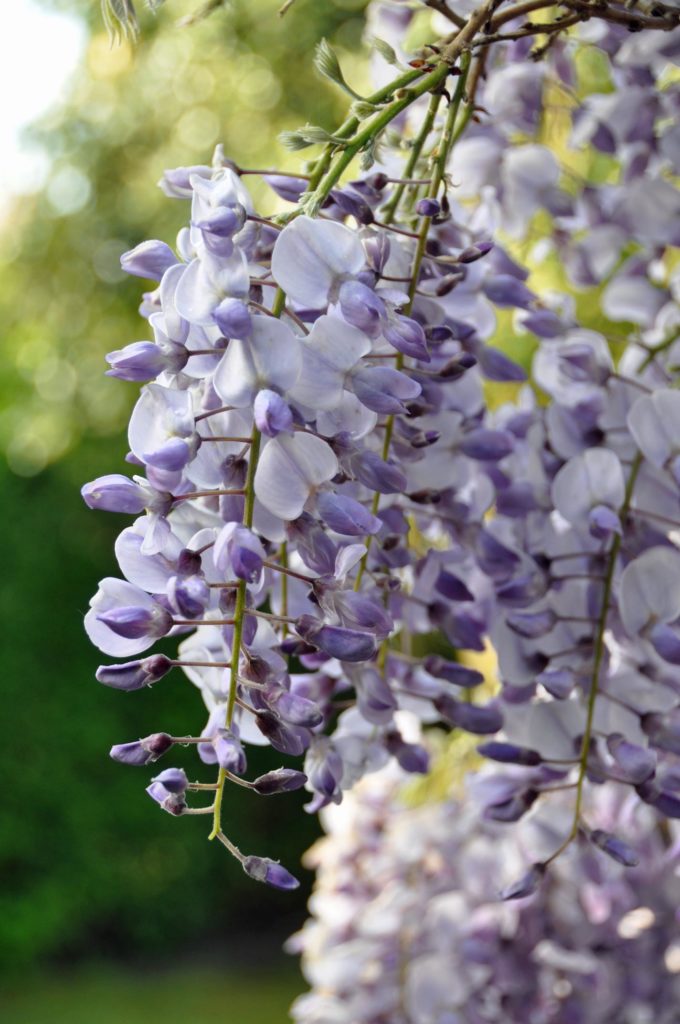
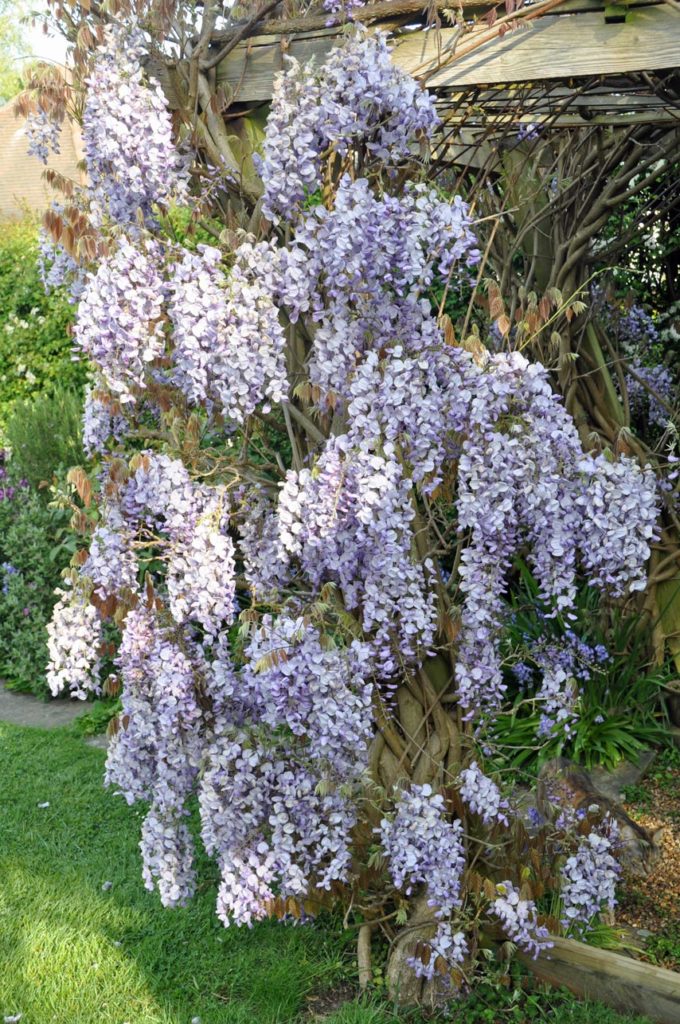
1) May had said she wanted to talk not just Brexit but also world problems; but in practice it fell to Juncker to propose one to discuss.
2) May has made clear to the Commission that she fully expects to be reelected as PM.
3) It is thought [in the Commission] that May wants to frustrate the daily business of the EU27, to improve her own negotiating position.
4) May seemed pissed off at Davis for regaling her dinner guests of his ECJ case against her data retention measures – three times.
5) EU side were astonished at May’s suggestion that EU/UK expats issue could be sorted at EU Council meeting at the end of June.
6) Juncker objected to this timetable as way too optimistic given complexities, eg on rights to health care.
7) Juncker pulled two piles of paper from his bag: Croatia’s EU entry deal, Canada’s free trade deal. His point: Brexit will be v v complex.
10) EU side felt May was seeing whole thing through rose-tinted-glasses. “Let us make Brexit a success” she told them.
11) Juncker countered that Britain will now be a third state, not even (like Turkey) in the customs union: “Brexit cannot be a success”.
12) May seemed surprised by this and seemed to the EU side not to have been fully briefed.
13) She cited her own JHA opt-out negotiations as home sec as a model: a mutually useful agreement meaning lots on paper, little in reality.
14) May’s reference to the JHA (justice and home affairs) opt-outs set off alarm signals for the EU side. This was what they had feared.
16) “The more I hear, the more sceptical I become” said Juncker (this was only half way through the dinner)
19) Davis then objected that EU could not force a post-Brexit, post-ECJ UK to pay the bill. OK, said Juncker, then no trade deal.
20) …leaving EU27 with UK’s unpaid bills will involve national parliaments in process (a point that Berlin had made *repeatedly* before).
21) “I leave Downing St ten times as sceptical as I was before” Juncker told May as he left
22) Next morning at c7am Juncker called Merkel on her mobile, said May living in another galaxy & totally deluding herself
23) Merkel quickly reworked her speech to Bundestag to include her now-famous “some in Britain still have illusions” comment
24) FAZ concludes: May in election mode & playing to crowd, but what use is a big majority won by nurturing delusions of Brexit hardliners?
25) Juncker’s team now think it more likely than not that Brexit talks will collapse & hope Brits wake up to harsh realities in time.
26) What to make of it all? Obviously this leak is a highly tactical move by Commission. But contents deeply worrying for UK nonetheless.
27) The report points to major communications/briefing problems. Important messages from Berlin & Brussels seem not to be getting through.
28) Presumably as a result, May seems to be labouring under some really rather fundamental misconceptions about Brexit & the EU27.
29) Also clear that (as some of us have been warning for a while…) No 10 should expect every detail of the Brexit talks to leak.
30/30) Sorry for the long thread. And a reminder: full credit for all the above reporting on the May/Juncker dinner goes to the FAZ

Free speech is held up as an inherent good, an invaluable bastion of the democracy, the freedoms of the Western developed world.
We are told that modern day “snowflakes” contest this self-evident truth and look to curb our everyday freedoms but in fact what is often contested is not the right to free speech, but rather the definition of free speech. What does it mean?
At one of the premieres of his landmark Holocaust documentary, “Shoah” (1985), the filmmaker Claude Lanzmann was challenged by a member of the audience, a woman who identified herself as a Holocaust survivor. Lanzmann listened politely as the woman recounted her harrowing personal account of the Holocaust to make the point that the film failed to fully represent the recollections of survivors. When she finished, Lanzmann waited a bit, and then said, “Madame, you are an experience, but not an argument.”
Lanzmann’s blunt reply favored reasoned analysis over personal memory. In light of his painstaking research into the Holocaust, his comment must have seemed insensitive but necessary at the time. Yet ironically, “Shoah” eventually helped usher in an era of testimony that elevated stories of trauma to a new level of importance, especially in cultural production and universities.
Widespread caricatures of students today as overly sensitive, vulnerable and entitled “snowflakes” fail to acknowledge the philosophical work that was carried out, especially in the 1980s and ’90s, to legitimate experience — especially traumatic experience — which had been dismissed for decades as unreliable, untrustworthy and inaccessible to understanding.
The philosopher Jean-François Lyotard, examined the tension between experience and argument in a different way.
Instead of defining freedom of expression as guaranteeing the robust debate from which the truth emerges, Lyotard focused on the asymmetry of different positions when personal experience is challenged by abstract arguments.
His extreme example was Holocaust denial, where invidious but often well-publicized cranks confronted survivors with the absurd challenge to produce incontrovertible eyewitness evidence of their experience of the killing machines set up by the Nazis to exterminate the Jews of Europe. Not only was such evidence unavailable, but it also challenged the Jewish survivors to produce evidence of their own legitimacy in a discourse that had systematically denied their humanity.
Lyotard shifted attention away from the content of free speech to the way certain topics restrict speech as a public good.
Some things are unmentionable and undebatable, but not because they offend the sensibilities of the sheltered young. Some topics, such as claims that some human beings are by definition inferior to others, or illegal or unworthy of legal standing, are not open to debate because such people cannot debate them on the same terms.
All people must be free to speak, if we are to have free speech, and that is self-evidently not possible if one group is excluded from being “people”. Freedom applies to the rights of all people to be included, as well as what is said.
The recent student demonstrations at various campuses can be understood as an attempt to ensure the conditions of free speech for a greater group of people, rather than censorship.
Liberal free-speech advocates rush to point out that the views of these individuals must be heard first to be rejected. But this is not the case. Universities invite speakers not chiefly to present otherwise unavailable discoveries, but to present to the public views they have presented elsewhere. Yet when those views invalidate the humanity of some people, they restrict speech as a public good.
The great value and importance of freedom of expression, for higher education and for democracy, is hard to underestimate. But it has been too easy for commentators to create a simple dichotomy between a younger generation’s oversensitivity and free speech as an absolute good that leads to the truth.
We would do better to focus on a more sophisticated understanding, such as the one provided by Lyotard, of the necessary conditions for speech to be a common, public good. This requires the realization that in politics, the parameters of public speech must be continually redrawn to accommodate those who previously had no standing.
Because the idea of freedom of speech does not mean a blanket permission to say anything anybody thinks. It means balancing the inherent value of a given view with the obligation to ensure that other members of a given community can participate as fully recognized members of that community.
Free-speech protections — not only but especially in universities, which aim to educate students in how to belong to various communities — can never mean that someone’s humanity, or their right to participate in political speech as political agents, can be freely attacked, demeaned or questioned.
The recent controversies over the conflict between freedom of expression and granting everyone access to speech hark back to 1963, when Yale University had rescinded an invitation to Alabama’s segregationist governor, George C. Wallace. In 1974, after unruly protests prevented William Shockley from debating his recommendation for voluntary sterilization of people with low I.Q.s, and other related incidents, Yale issued a report on how best to uphold the value of free speech on campus that remains the gold standard for many other institutions.
Unlike today’s somewhat reflexive defenders of free speech, the Yale report placed the issue of free speech on campus within the context of an increasingly inclusive university and the changing demographics of society at large. While Yale bemoaned the occasional “paranoid intolerance” of student protesters, the university also criticized the “arrogant insensitivity” of free speech advocates who failed to acknowledge that requiring of someone in public debate to defend their human worth conflicts with the community’s obligation to assure all of its members equal access to public speech.
What is under severe attack, in the name of an absolute notion of free speech, are the rights, both legal and cultural, of minorities to participate in public discourse.
The issues to which students are so sensitive might be benign when they occur within the ivory tower. Coming from the brexit campaign trail and now the US White House, the threats are not meant to merely offend. Like President Trump’s attacks on the liberal media (or indeed right wing press attacks on the British judiciary) as the “enemies of the people,” these insults are meant to discredit and delegitimize whole groups as less worthy of participation in the public exchange of ideas.
The weather has turned cold. It was inevitable as soon as ur plans had been set for a trip to buy bedding, just like the day of our first tennis match is always (and I mean always) rained off. So we headed off to buy begonias safe in the knowledge that once home they would need to be bundled up and stored for a week.
London rarely sees the snow but temperatures are definitely down to just above freezing for the night. There hasn’t been much frost but I suppose it’s still early days.
Perhaps more frustrating it’s also a problem for my garden’s latest biological weapon – nemaslug! It arrives in a packet (sealed) and you are asked to dissolve it into a 10l watering can and then further delete it 1l into 10l before watering it out onto your beds. The solution contains nematodes a parasitic worm that essentially eats young slugs alive. Gruesome but hopefully effective apart from the condition that the ground mustn’t get too cold ie. no frosts.

I’ve never used it before so won’t know whether it’s the temperature or my incompetent watering that’s to blame if it fails.
Mostly though the garden is looking good. I have that enthusiasm that aways arrives before making up the hanging baskets and gradually fizzles away as the reality of my incompetent watering schedule dawns, year after year.
As well as bedding I have some perennial geraniums to plant out underneath the new roses (blue Rozanne Gewat) and some verbena lollipop bonasiensis to top up the border on the gravel garden. I need to dig some of the many self-seeders out of the gravel path up to the gravel garden before they really dig deep. Plenty of primroses and maybe some violets could be moved along quite easily. I’m not so sure about the iris and fritelaria but they’d certainly be no worse off.
As always each success and failure in the garden brings a new item to the list for next year. The dwarf narcissus underneath the hedge worked well but now I’m left wondering what can be put around them to carry the season forward a little, maybe white mascara, or woodruff or possible some small tulips that naturalise.
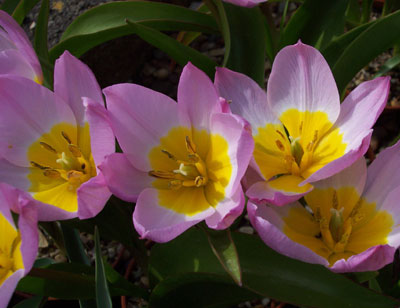
As yet I’m undecided about the huge alliums in the fritelaria bed. They’ve obviously dried out at various stages so the leaves have become scorched but maybe their flowers are worth it. they’re about to open into (hopefully) huge white balls and I’m quite excited about what may happen.
But overall the bed seems meagre: just too thin. Like the bed at the back, it could be doubled in width and benefit. One side effect of this would be to make the carrying of the lawnmower all the way up to the back lawn even more difficult. The end of the bed is already being squashed and mangled as the machine is shimmied over the plants, something that I’m unhappy about but the answer has to be long term, probably sinking stepping stones down into the middle of the gravel.
Projects beget projects.
The tulips planted at the back are beautiful and have been a delight this year. Maybe next time I should top up with some of the white and darker bulbs but in the front, some shortish pink bulbs would look lovely. I’d like some more anemones at the front of the rose bed also.

Next time I’m offered some white forget-me-nots I need to accept and stick them in my pots for the early spring. And maybe I could plant up a few more snowdrops.
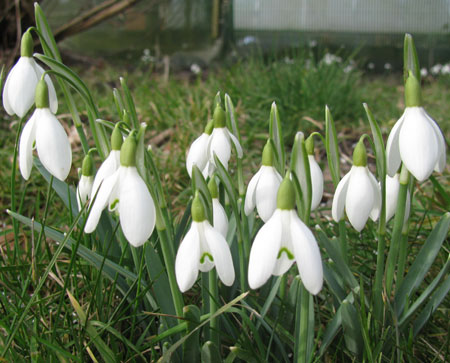
At the same time, I’m going to start pulling up and getting rid of the comfrey. It grows well in the dark shade but isn’t that pretty. I’m coming around to the bugold though.
And the other thing I need to work on, which might actually help with the hanging baskets is putting together a watering system using some small plastic bottles buried into the compost in pots, specific beds and baskets. I have a whole range of watering globes that basically work on the same system but if I could bury small 330ml bottles into the pots, surely i could achieve the same result by creating mini reservoirs?
And then wandering through the various on-line catalogues there are always new sweeties in the shop…


Supper tonight and I’ve decided to go with three salads and a “bread and butter” pudding made out of the left-over panettone like Easter cake. It might be described as a left-over meal but that sounds cruel.
Either way I’m now left with not quite enough time to do everything so am writing lists.
Mostly it’s a question of time in the oven or on the hob rather than effort.
Some fresh bread would probably be a good thing. Plus there’s a sad lack of alcohol in the house.
The kids will need some pasta and an early supper to free up the space for my mates.
I will need to stop myself over providing and just try to keep it simple. Raspberry muffins are calling me.
People are very afraid of cancer, with good reason. Unlike other things that kill us, it often seems to come out of nowhere.
But evidence suggests that cancer may be preventable, too. Unfortunately, this has inflamed as much as it has assuaged people’s fears.
As a physician, I have encountered many people who believe that heart disease, which is the single biggest cause of death among Americans, is largely controllable. After all, if people ate better, were physically active and stopped smoking, then lots of them would get better. This ignores the fact that people can’t change many risk factors of heart disease like age, race and family genetics.
People don’t often seem to feel the same way about cancer. They think it’s out of their control. A study published in Science in January 2015 seemed to support that view. It tried to explain why some tissues lead to cancer more often than others. It found a strong correlation between the number of times a cell divides in the course of a lifetime and the risk of developing cancer.
In other words, this study argued that the more times DNA replicates, the more often something can go wrong. Some took this to mean that cancer is much more because of “bad luck” than because of other factors that people could control.
But this is not really what the study showed. Lung cells, for instance, divide quite rarely, and still account for a significant amount of cancer. Cells in the gastrointestinal tract divide all the time and account for many fewer cancers. Some cancers, like melanoma, were found to be in the group of cancers influenced more by intrinsic factors (or those we can’t control), when we clearly know that extrinsic factors, like sun exposure, are a major cause.
Further, this study was focused more on the relative risks of cancer in one type of tissue versus another. What we really care about is how much we can reduce our own risk of cancer by changing our behavior.
A more recent study published in Nature argues that there is quite a lot we can do to prevent cancer. Many studies have shown that environmental risk factors and exposures contribute greatly to many cancers. Diet is related to colorectal cancer. Alcohol and tobacco are related to oesophageal cancer. HPV is related to cervical cancer, and hep C is related to liver cancer.
And you’d have to be living under a rock not to know that smoking causes lung cancer and that too much sun can lead to skin cancer.
Using sophisticated modeling techniques, the researchers argued that less than 30% of the lifetime risk of getting many common cancers was because of intrinsic risk factors, or the “bad luck.” The rest were things you can change.
Most recently, in JAMA Oncology, researchers sought to quantify how a healthful lifestyle might actually alter the risk of cancer. They identified four domains that are often noted to be related to disease prevention: smoking, drinking, obesity and exercise.
They defined people who engaged in healthy levels of all of these activities as a “low risk” group. Then they compared their risk of getting cancer with people who weren’t in this group. They included two groups of people who have been followed and studied a long time, the Nurses’ Health Study and the Health Professionals Follow-up Study, as well as national cancer statistics.
Of the nearly 90,000 women and more than 46,000 men, 16,531 women and 11,731 men fell into the low-risk group. For each type of cancer, researchers calculated a population-attributable risk, which is the percentage of people who develop cancer who might have avoided it had they adopted low-risk behaviors.
About 82% of women and 78% of men who got lung cancer might have prevented it through healthy behaviors. About 29% of women and 20%t of men might have prevented colon and rectal cancer. About 30%t of both might have prevented pancreatic cancer. Breast cancer was much less preventable: 4 percent.
Over all, though, about 25% of cancer in women and 33% in men was potentially preventable. Close to half of all cancer deaths might be prevented as well.
No study is perfect, and this is no exception. These cohorts are overwhelmingly white and consist of health professionals, who are not necessarily like the population at large. But the checks against the national data showed that if anything, these results might be underestimating how much cancer is preventable by healthy behaviors.
This also isn’t a randomized controlled trial, and we can certainly argue that it doesn’t prove causation.
A bigger concern to me is that people might interpret these findings as assigning fault to people who get cancer. You don’t want to get into situations where you feel as if people don’t deserve help because they didn’t try hard enough to stay healthy. Much of cancer is still out of people’s control.
In this study, “low risk” status required all four healthy lifestyles. Failing in any one domain put you in the high-risk category, and that seemed like a lot to ask of people.
On further reading, though, it’s clear that the requirements weren’t overly burdensome. Not smoking was defined as never having smoked or having quit at least five years ago. That’s clearly good for health. Moderate alcohol consumption was defined as no more than one drink a day on average for women, and no more than two for men. It in no way requires abstinence.
Adequate weight was defined as a B.M.I. of at least 18.5 and no more than 27.5. The cutoff for “overweight” is 25, meaning that you don’t have to be thin; you just have to be less than obese (B.M.I. 30). Finally, exercise was defined as 150 minutes a week of moderate-intensity activity or 75 minutes of vigorous-intensity activity. That’s a reasonable and quite achievable goal.
I was surprised to realize that I’m already “low risk.” I bet many people reading this are “low risk,” too.
As we talk about cancer “moonshots” that will most likely cost billions of dollars and might not achieve results, it’s worth considering that — as in many cases — prevention is not only the cheapest course, but also the most effective.
Simple changes to people’s behaviors have the potential to make sure many cancers never occur. They have a side benefit of preventing health problems in many other areas, too. Investment in these efforts may not be as exciting, but it may yield greater results.

The NYT is a good source for recipes that I wouldn’t find in my normal hunting grounds. It seems that cooking provides another example of two countries divided.
Since I have two friends coming over for supper and cards this week, I was looking for recipes, thinking maybe of three salads to choose from. Although time consuming to prepare they can usually be prepared ahead and just dressed there and then, so are convenient for a busy day. And thenI though about what might be seasonal or topical, and came up with the idea of asparagus (just arriving at it’s best). The recipe below comes with a herb sauce based on wild garlic leaves, which have also just shown up in my shady garden so it all seems fated to be.
